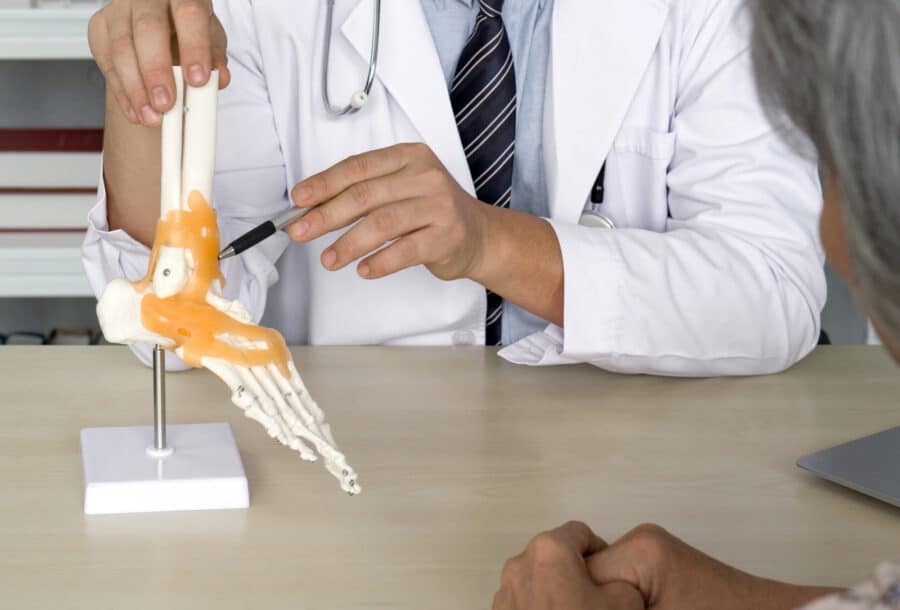Ankle injuries, particularly those involving ligaments, are a common affliction that can significantly impact an individual's mobility and quality of life. Traditional surgical methods for repairing damaged ankle ligaments often involve large incisions, extensive tissue disruption, and lengthy recovery periods. However, advancements in medical technology have paved the way for minimally invasive techniques offer many benefits over traditional methods.
Read on to learn the benefits of minimally invasive ankle ligament reconstruction.
Minimally Invasive Ankle Surgery: A Modern Approach
Minimally invasive ankle surgery, a groundbreaking advancement in orthopedic medicine, revolutionizes the treatment of ankle injuries by employing smaller incisions coupled with specialized instruments. This innovative approach mirrors the therapeutic goals of traditional open surgery while significantly minimizing bodily trauma. The key to its success lies in the delicate balance between surgical precision and reduced tissue disruption.
As a result, patients benefit from many post-operative advantages, such as the following:
Reduced Post-Operative Pain
Minimally invasive ankle surgery significantly alleviates post-operative discomfort, a pivotal factor in patient recovery. Utilizing diminutive incisions substantially curtails the extent of tissue damage, directly correlating with a mitigated pain response from the body. This lesser degree of tissue trauma inherently leads to reduced pain sensations post-surgery, enabling patients to experience a more comfortable recovery phase. The diminished reliance on analgesics, consequent to lower pain levels, also lessens the risk of medication-related adverse effects.
Faster Recovery Time
The hallmark of minimally invasive surgery lies in its capacity to expedite the healing process, enabling patients to revert to their daily engagements swiftly. Traditional surgery, characterized by extensive incisions and significant tissue manipulation, inherently necessitates an extended recuperation duration. In stark contrast, the minimal tissue disturbance inherent in minimally invasive procedures significantly shortens the convalescence period.
This rapid rehabilitation augments the patient's quality of life post-surgery by facilitating an earlier resumption of personal and professional activities. It bears economic benefits by curtailing the indirect costs associated with prolonged recovery, such as lost wages and extended medical care.
Lower Risk Of Complications
Surgical interventions always carry a risk of complications, such as infection, excessive bleeding, and adverse reactions to anesthesia. Minimally invasive ankle ligament reconstruction, by its less invasive nature, can inherently reduce the potential for such complications.
Smaller incisions mean less exposure of internal tissues to external environments, thereby decreasing the likelihood of infection. Additionally, the precision of minimally invasive techniques helps minimize blood loss during the procedure.
Improved Cosmetic Outcomes
In surgical interventions, the aesthetic aftermath significantly affects patient satisfaction. Traditional surgeries, with their larger incisions, often result in conspicuous scars that serve as unwelcome reminders of the procedure. Conversely, minimally invasive techniques, characterized by their use of small incisions, significantly ameliorate this concern by leaving behind considerably less visible scars. This subtlety in scarring is especially appreciated by patients who are conscious of the post-operative appearance of their ankles.
The ability to achieve surgical goals with minimal cosmetic impact underscores the patient-centered nature of minimally invasive procedures, making it an attractive option for those seeking both functional and aesthetic benefits.
Enhanced Functional Recovery
Restoring the ankle's stability and functionality is the cornerstone of ankle ligament reconstruction. Minimally invasive techniques stand out in their ability to effectively achieve these objectives, often leading to superior patient strength, flexibility, and range of motion outcomes.
The meticulous precision inherent in these techniques enables surgeons to repair damaged ligaments with exceptional accuracy, which fosters a more robust and functional ankle in the recovery phase. This high level of functional restoration facilitates a smoother rehabilitation process and enhances the quality of life for patients, reinforcing the efficacy of minimally invasive approaches in orthopedic surgeries.
Preservation Of Surrounding Tissues
One of the pivotal advantages of minimally invasive surgery lies in its conservative approach towards the body's tissues. Unlike traditional open surgeries, which may require significant manipulation or even removal of healthy tissues to reach the affected area, minimally invasive methods employ specialized tools designed to navigate small incisions. This strategic approach significantly reduces unnecessary trauma, thereby preserving the integrity of the surrounding tissues.
The conservation of healthy tissues aids in a more practical healing process and contributes to the sustained health of the ankle joint. This principle of minimal invasiveness aligns with modern surgical philosophies that prioritize patients' well-being and rapid recovery.
Conclusion
Minimally invasive ankle ligament reconstruction offers many benefits that greatly improve the patient's experience and outcome. With the information mentioned above in mind, this modern surgical approach marks a significant advancement in treating ankle ligament injuries. As technology continues to evolve, so will the techniques and instruments used in minimally invasive surgery, further enhancing the efficacy and benefits of this approach.


